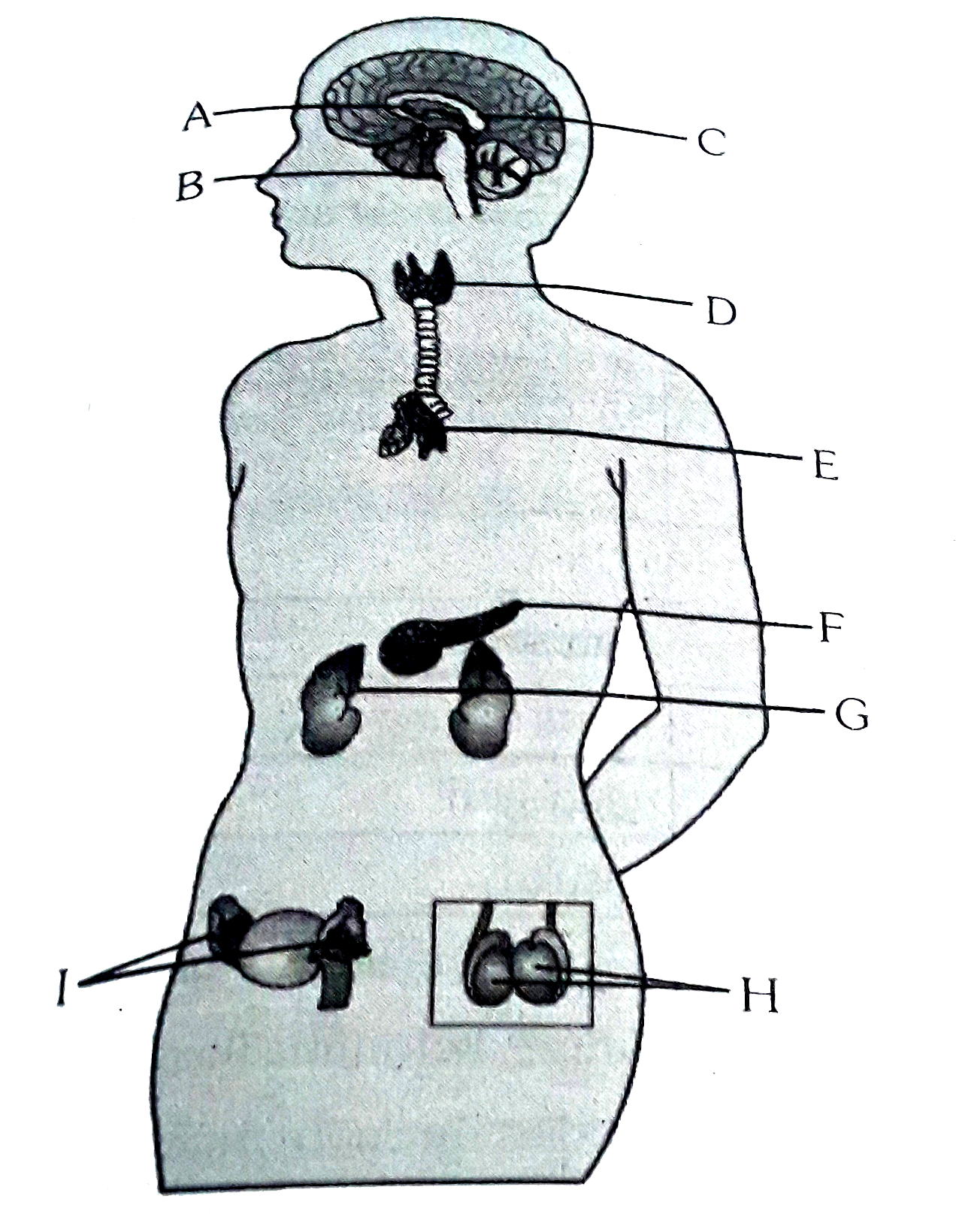Find out A,B,C,D,E,F and G indicating either "yes" or "no" in the given table.
To solve the question, we need to analyze the properties of each transport mechanism: Simple Diffusion, Facilitated Diffusion, and Active Transport. We will fill in the table with "yes" or "no" based on the characteristics of each transport mechanism.
1. Property: Highly Selective
- Simple Diffusion: No, because it allows any lipid-soluble molecules to pass through the membrane.
- Facilitated Diffusion: Yes, because it uses specific carrier proteins to transport certain molecules.
- Active Transport: Yes, because it also uses specific carrier proteins (pumps) to transport molecules against their concentration gradient.
Table Entry:
- A = Yes (Facilitated Diffusion)
- B = Yes (Active Transport)
2. Property: Transport Saturates
- Simple Diffusion: No, because it does not involve carrier proteins and can continue as long as there is a concentration gradient.
- Facilitated Diffusion: Yes, because it can reach a maximum rate when all carrier proteins are occupied.
- Active Transport: Yes, because it can also reach saturation when all pumps are occupied.
Table Entry:
- C = No (Simple Diffusion)
- D = Yes (Facilitated Diffusion)
- Yes (Active Transport)
3. Property: Requires ATP
- Simple Diffusion: No, because it does not require energy; it occurs along the concentration gradient.
- Facilitated Diffusion: No, because it also occurs along the concentration gradient and does not require energy.
- Active Transport: Yes, because it requires energy in the form of ATP to move substances against their concentration gradient.
Table Entry:
- E = No (Simple Diffusion)
- F = No (Facilitated Diffusion)
- G = Yes (Active Transport)
Final Table:
|Property|Simp≤D⇔usion|FacilitatedD⇔usion|ActiveTransport|⊢−−−−−−−−−−−−−−−−−−−−−−−−⊢−−−−−−−−−−−−−−−−⊢−−−−−−−−−−−−−−−−−−−−−⊢−−−−−−−−−−−−−−−−||(i)Highlyse≤ctive|No|Yes(A)|Yes(B)||(ii)Transportsaturates|No(C)|Yes(D)|Yes||(iii)RequiresATP|No(E)|No(F)|Yes(G)∣
Summary of Answers:
- A = Yes
- B = Yes
- C = No
- D = Yes
- E = No
- F = No
- G = Yes
- Simple Diffusion: No, because it allows any lipid-soluble molecules to pass through the membrane.
- Facilitated Diffusion: Yes, because it uses specific carrier proteins to transport certain molecules.
- Active Transport: Yes, because it also uses specific carrier proteins (pumps) to transport molecules against their concentration gradient.
- A = Yes (Facilitated Diffusion)
- B = Yes (Active Transport)
- Simple Diffusion: No, because it does not involve carrier proteins and can continue as long as there is a concentration gradient.
- Facilitated Diffusion: Yes, because it can reach a maximum rate when all carrier proteins are occupied.
- Active Transport: Yes, because it can also reach saturation when all pumps are occupied.
- C = No (Simple Diffusion)
- D = Yes (Facilitated Diffusion)
- Yes (Active Transport)
- Simple Diffusion: No, because it does not require energy; it occurs along the concentration gradient.
- Facilitated Diffusion: No, because it also occurs along the concentration gradient and does not require energy.
- Active Transport: Yes, because it requires energy in the form of ATP to move substances against their concentration gradient.
- E = No (Simple Diffusion)
- F = No (Facilitated Diffusion)
- G = Yes (Active Transport)
|Property|Simp≤D⇔usion|FacilitatedD⇔usion|ActiveTransport|⊢−−−−−−−−−−−−−−−−−−−−−−−−⊢−−−−−−−−−−−−−−−−⊢−−−−−−−−−−−−−−−−−−−−−⊢−−−−−−−−−−−−−−−−||(i)Highlyse≤ctive|No|Yes(A)|Yes(B)||(ii)Transportsaturates|No(C)|Yes(D)|Yes||(iii)RequiresATP|No(E)|No(F)|Yes(G)∣
- A = Yes
- B = Yes
- C = No
- D = Yes
- E = No
- F = No
- G = Yes
Topper's Solved these Questions
- TRANSPORT IN PLANTS BOOK - AAKASH INSTITUTE ENGLISHCHAPTER - TRANSPORT IN PLANTS EXERCISE - Try Yourself (Fill in the blanks )
2 Videos
- TRANSPORT IN PLANTS BOOK - AAKASH INSTITUTE ENGLISHCHAPTER - TRANSPORT IN PLANTS EXERCISE - Try Yourself (Write wheter the following statements are true or false )
3 Videos
- TRANSPORT IN PLANTS BOOK - AAKASH INSTITUTE ENGLISHCHAPTER - TRANSPORT IN PLANTS EXERCISE - Try Your Self (Determine whether the following statements are true or false )
2 Videos
- THE LIVING WORLDBOOK - AAKASH INSTITUTE ENGLISHCHAPTER - THE LIVING WORLDEXERCISE - TRY YOURSELF
44 Videos
Similar Questions

Identify A, B, C, D, E, F,G
View SolutionIdentify A, B, C, D, E and F in the table given below :

View SolutionIdentify A, B, C, D, E and F in the table given below :

View SolutionLabel A,B,C,D,E, F,G,H and I is the given diagram of location of endocrinie galnds

View SolutionIdentify a, b, c, d, e and f in the table given below :

View SolutionIdentify a, b, c, d, e and f in the table given below :

View SolutionName the blank spaces a, b, c, d, e, f and g given in the following table:

View SolutionGiven below some properties of transport mechanism. Which of these are true for the facilitated transport
(i) Require ATP energy
(ii) Highly selective
(iii) Uphill transport
(iv) Requires special membrane proteins
(v) Transport saturates
View SolutionIn lung , maximum gaseous exchange is due to
(a) Simple diffusion
(b) Active transport
(c) Passive transport
(d) Facillitated diffusion
View SolutionIf a,b,c,d,e, f are A. M's between 2 and 12 , then find a+b+c+d+e+f.
View Solution
